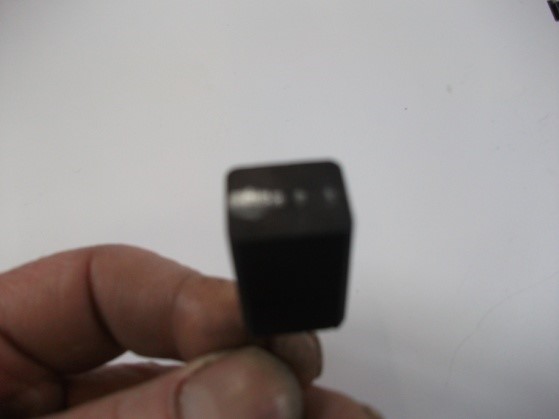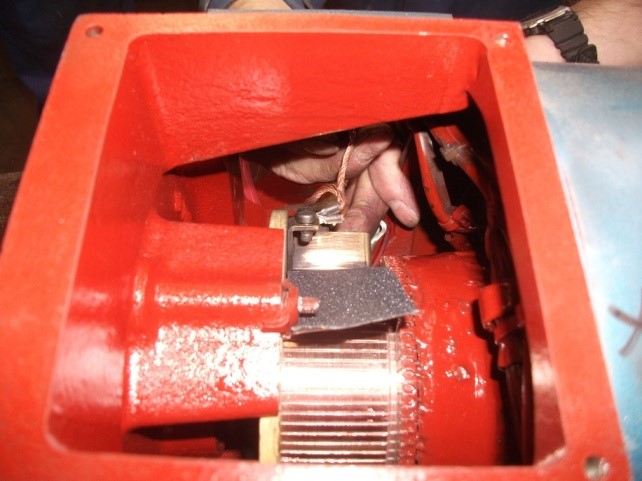A DC shunt motor has been returned to us for investigation with reports of sparking under the carbon brushes and with the brushes wearing rapidly.
The motor appeared to be in good condition with no obvious signs of a fault.

Our Engineer carried out a thorough investigation into the possible reasons for the problem and the cause was identified as a poor brush to commutator contact surface.
From the photograph you can see that the shiny part of the brush surface does not cover the entire area of the brush:


When new carbon brushes are supplied, the end of the brush needs to be shaped to fit the arc of the commutator. This process is called ‘bedding in’. These brushes have not been shaped at all and the current can only pass through the small area at the centre of the brush, which has caused the sparking and brush wear.
To ‘bed in’ the brushes, it is necessary to place a strip of abrasive paper over the commutator and under the brush, with the abrasive side facing the brush.


The brush is held with pressure against the strip and the paper moved back and forward by hand until the shape has been formed. This must be done for all brushes and then the excess carbon removed from the motor.
The DC motor was re-built and fully tested. It ran smoothly with no sparking.
If you have a motor with a sparking problem then this is one of the checks that you can do before investigating other causes. Please see our DC Motor rewinds and repairs section for more information on other issues we can help you with.